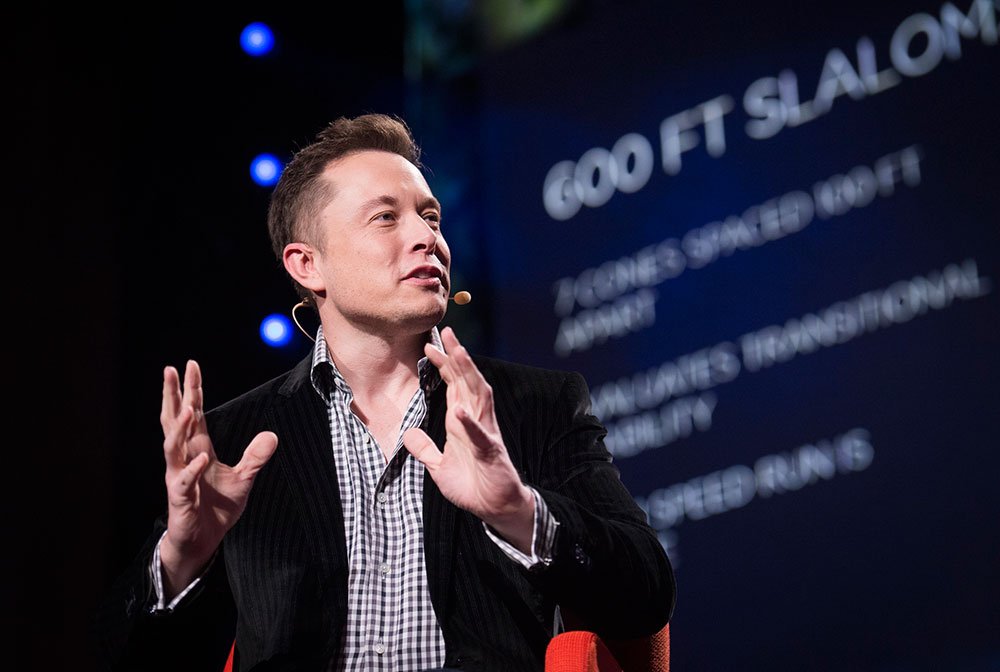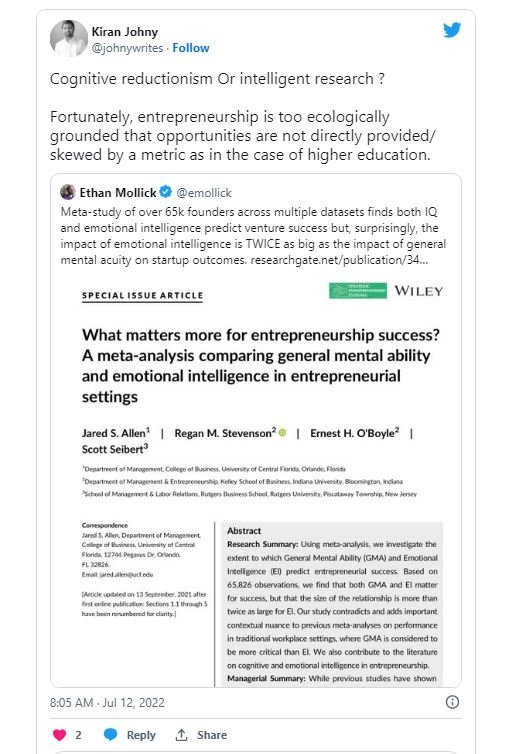This is an updated version of my previous blog post that explored the flaws of effectuation.
The series has two more posts which you can read here and here (Effectual Self-Organization: Could it be a mindful praxis for self-organization).

The empirical evidence for effectuation came from the study of expert entrepreneurs conducted by Saraswathy. She contrasts her study on entrepreneurial expertise with entrepreneurial performance which has been traditionally studied either (1) as a set of personality traits of the entrepreneur that explains the success or failure of the firms he or she creates (Llewellyn and Wilson, 2003), or (2) as a set of circumstances or attributes of the project and its environment that contains the seeds of its success or failure (Thornton, 1999). In that, she conducted a cognitive science-based study of entrepreneurial expertise using think-aloud verbal protocols. Included in that, was a 17-page problem set of 10 typical decisions in a startup firm and had a representative sample of 27 expert entrepreneurs.
I claim that this expertise framing of effectuation is flawed and counterproductive. I propose a much more scientific way of approaching or using effectuation, i.e. Effectuation as a praxis/logic/heuristics for self-organization in complex domains, not just as possessions of expert entrepreneurs.
Following are some reasons why I consider the expertise theory of effectuation flawed;
Firstly, entrepreneurship is a low validity domain (Kahneman and Klein, 2009) with extreme levels of complexity. To have genuine expertise to develop, the domains must be of high validity. i.e. “Skilled intuitions will only develop in an environment of sufficient regularity, which provides valid cues to the situation” (Kahneman and Klein, 2009). This was also previously spotted in a review by Shanteau(1992), in which he confirmed the importance of predictable environments and opportunities to learn them, in order to develop real expertise. To Kahneman and Klein(2009) prolonged practice and feedback that is both rapid and unequivocal are necessary conditions for expertise, provided by predictable environments. To be more specific about the contrast, Immediate Feedback, Repeatability & Regular environment are the fundamental conditions to develop expertise. Entrepreneurship is characterized by the opposite; Delayed feedback, Non-Repeatability, Irregular complex, and an emergent environment.
Secondly, the effectiveness of deliberate practice as claimed by effectuation will not work in complex domains like entrepreneurship. There is no scientific evidence of it. Saraswathy(2008) defines an expert as someone who has attained a high level of performance in a domain as a result of years of experience and deliberate practice (Ericsson et al, 1993). Against this, Baron (2009) raised the important problem, ie “In what tasks or activities do successful entrepreneurs demonstrate expert performance?”. Advancing that point, Baron and Henry (2010) argued that deliberate practice may not be possible in entrepreneurship and that entrepreneurs instead either learn vicariously or transfer skills learned through practice in other domains into their new ventures. Frankish et al(2013) specifically questioned the idea of learning from experience. They pointed to the lack of repetition opportunities (owing to task diversity) and the difficulty of interpreting the various causes of new venture survival, suggesting that entrepreneurs improve performance only partially based on their experience in running new ventures. Further, in recent scholarly works, it has been demonstrated that deliberate practice may not guarantee better performance in extremely complex domains. A 2014 meta-analysis (Macnamara et al, 2014) has shown that deliberate practice only explained 26% of the variance in performance for games, 21% for music, 18% for sports, 4% for education, and less than 1% for professions. This further demonstrates a low connection between deliberate practice and performance in complex unstructured domains.
Thirdly, expertise in complex social domains are distributed (Edwards, 2010). It is not necessary that an entrepreneur must be an expert in finance, accounting, programming, law, etc. Such expertise is distributed(and or extended) across various individuals(lawyer, doctor) institutions(law enforcement, companies) and artifacts(tools, software). etc. It is not even necessary that the entrepreneur has to know the entrepreneurial core activities. He or she can still win in case she or he is in the right high network place(e.g. Harvard, Stanford, etc.), get good people to mentor and work with (e.g. Facebook case of Sean Parker, Peter Thiel), get access to specialized institutions(e.g. YC in the case of Dropbox), have a rich family to support, etc. He can also fail despite all of this(see next).
Fourthly, complex domains like entrepreneurship are subjected to various complexity laws like power laws, Mathew effects, reputation effects, ecosystem-embedded-preferential-attachment, etc. This invalidates success as a metric of expertise. Core events in complex systems like entrepreneurship never repeat in originality(strange attractor effect), feedback is delayed, and since complex systems are governed by power laws, small things(e.g. Harvard dorm Facebook) can result in huge success, and resource-rich interventions can fail(google plus). A tangent is that the emergent property of a system may not be the result of the expertise of a particular agent or agents, but because of the dynamics of the whole system co-evolving with the ecosystem as a whole. This may prevent us from establishing any valid causal relationship between expertise and performance in a domain like entrepreneurship. Thus in complexity, high performance may not guarantee success, in that, the success of an individual does not depend uniquely on the quality of performance (Barabási, 2018).
Fifthly, I believe that, like the personality view of entrepreneurial achievement (McClelland,1951, 1961; Llewellyn and Wilson, 2003), the expertise view may also have some unintended counter-productive effects. It can legitimize the hubris among successful entrepreneurs, and at the same time make the aspiring entrepreneurs think that they may require deliberate practice to become a successful entrepreneur, while in-fact success could be the result of complexity-effects like Mathew effects, reputation effects, preferential attachment, etc.
Sixthly, A very important question to ask here is; Is it even desirable to start multiple ventures than make one single venture successful. Why do people start multiple ventures? Is it because they see it as playing chess or golf? Will they start another venture if they are incredibly successful in the first business? Will a few outlier cases like Elon Musk ethically suffice us to prescribe it as a standard scientific way of thinking about the world? Do multiple successful marriages make someone a marriage expert, or unlucky and bad at marriage?. The key point I am trying to make here is that in domains like chess, multiple success may be a sign of expertise. In many extremely complex questions of life, it may be undesirable.
Seventhly, as I have demonstrated, most effectuation principles correspond to the dynamics of self-organizing complex system. This means it must not be limited to entrepreneurs. Herbert Simon also hinted at this aspect and suggested that there might be a connection between effectuation and Near Decomposibility (Sarasvathy and Simon, 2000). According to him (Saraswathy, 2008), Near Decomposibility is an astonishingly ubiquitous principle in the architecture of rapidly evolving complex systems, and effectuation appears to be a preferred decision model with entrepreneurs who have created high-growth firms, we should be able to link Near Decomposibility to the processes these entrepreneurs use to create and grow enduring firms–whether in an experimental situation or in the real world (Saraswathy, 2008, p.163). But instead of trying out a more fundamental complexity science-based explanation of entrepreneurial behavior, Saraswathy used the expertise theory to build the theory of effectuation.
Finally, I believe that effectuation if developed as a self-organization logic can be applied in other domains. It has applications in complex domains like education, learning, economics, politics, etc. Framing effectuation as a science of action in social complexity will open up a lot of possibilities. This also will make the theory more robust and useful.
Read also: Effectual Self-Organization: Could it be a mindful praxis for self-organization
Part of Esoloop Framework Series
Citations
Barabási, Albert-László. The Formula: The science behind why people succeed or fail. Macmillan, 2018
Baron, Robert A. “Effectual versus predictive logics in entrepreneurial decision making: Differences between experts and novices: Does experience in starting new ventures change the way entrepreneurs think? Perhaps, but for now,“caution” is essential.” Journal of Business Venturing 24, no. 4 (2009): 310-315
Baron, Robert A., and Rebecca A. Henry. “How entrepreneurs acquire the capacity to excel: Insights from research on expert performance.” Strategic Entrepreneurship Journal 4, no. 1 (2010): 49-65.
Ericsson, K. Anders, Ralf T. Krampe, and Clemens Tesch-Römer. “The role of deliberate practice in the acquisition of expert performance.” Psychological review 100, no. 3 (1993): 363
Frankish, Julian S., Richard G. Roberts, Alex Coad, Taylor C. Spears, and David J. Storey. “Do entrepreneurs really learn? Or do they just tell us that they do?.” Industrial and Corporate Change22, no. 1 (2013): 73-106.
Kahneman, Daniel, and Gary Klein. “Conditions for intuitive expertise: a failure to disagree.”American psychologist 64, no. 6 (2009): 515.
Llewellyn, David J., and Kerry M. Wilson. “The controversial role of personality traits in entrepreneurial psychology.” Education+ Training (2003).
Macnamara, Brooke N., David Z. Hambrick, and Frederick L. Oswald. “Deliberate practice and performance in music, games, sports, education, and professions: A meta-analysis.” Psychological science 25, no. 8 (2014): 1608-1618.
McClelland, David C. “N achievement and entrepreneurship: A longitudinal study.” Journal of personality and Social Psychology 1, no. 4 (1965): 389.
Sarasvathy, Saras D. Effectuation: Elements of entrepreneurial expertise. Edward Elgar Publishing, 2009.
Sarasvathy, Saras D., and Herbert A. Simon. “Effectuation, near-decomposability, and the creation and growth of entrepreneurial firms.” In First Annual Research Policy Technology Entrepreneurship Conference. 2000.
Shanteau, James. “Competence in experts: The role of task characteristics.” Organizational behavior and human decision processes 53, no. 2 (1992): 252-266.
